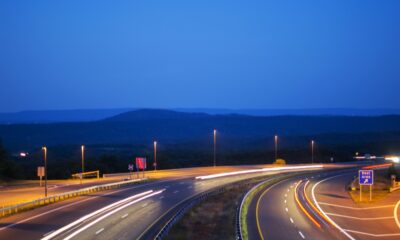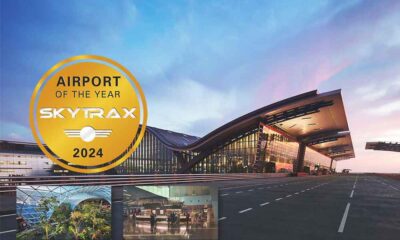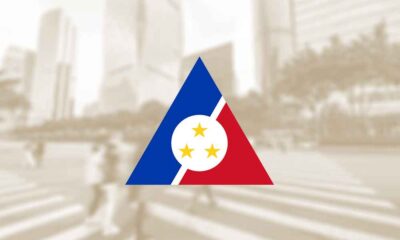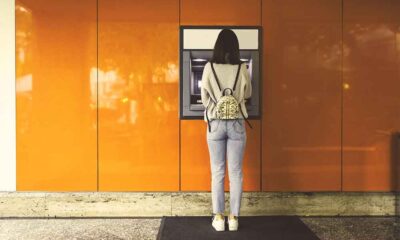Featured
PH People Power Revolution Inspired other Peaceful Protests from Around the World
On this day 35 years ago, Filipinos became free from dictatorship and showed the world that the voice of the people will not be silenced.
February 25, 1986 marks the world-renowned peaceful protests dubbed “people power.” Over 2 million protesters–along with military defectors, and representatives from the Catholic Church in the Philippines marched together at Epifanio de los Santos (EDSA) Avenue to peacefully overthrow the regime of dictator Ferdinand Marcos, which by then have ruled the country in an authoritarian style for 20-years.
What led to the revolution
The Philippines was placed under martial law following Proclamation No. 1081 on September 23, 1972 of then President Marcos, citing the rise of civil disobedience as justification for the proclamation as activists, members of the press, and his political opponents–including Senator Benigno “Ninoy” Aquino Jr. were arrested, which by that time served as the voice of the general public.
Economic downfall also was experienced in the 1980s after the Philippines was hit hard by the recession in America in 1981. The Philippines’ economy suffered the worst recorded economic downfall of the country in 1984 and 1985, with the economy contracting by a whopping 7.3% in successive years.
Ninoy Aquino Jr. was also assassinated on August 21, 1983, which sparked outrage among his supporters that led to further civil disobedience, prompting the government to double down on maintaining peace and order in the country.
With economic problems and unrest occurring, coupled with pressure from the US government, Marcos ordered a snap elections to be held, a gamble he conceived to show the world that support is still on his side. Marcos won the election as proclaimed by the Commission on Elections and the Batasang Pambansa on February 15, 1986, but election watchdogs proclaimed Corazon “Cory” Aquino, the husband of Ninoy, the winner.
This proved to be the last straw for Filipinos.
The People Power Revolution
Following these events, calls for Filipinos to flock EDSA Avenue were answered, as more than 2 million protesters gathered to call for the ouster of Marcos on February 22. Students, office workers, activists, strengthened by military defectors and key members of various religions in the Philippines all came in unity.
The protesters were not in the streets with the pre-determined aim to march to Malacañang Palace, or to seize military weapons and take arms against the government. What made the mass protest renowned was the way Filipinos took control of their country from a dictator through peaceful means that was led by the people of the country.
Among the activities Filipinos engaged in during the people power were the casual staples of greetings by way of singing and waving their hands. Shouts of Cory’s name were also loud in the streets. The color Yellow was abundant in the scenes, signifying the color of Cory’s party.
Tanks were not met with rifles, instead, they were met with rosaries and prayers as nuns made themselves the barricade that stopped Marcos’ most loyal military men in their tracks.
The government could only do so much. Transmitters of a well-known Catholic radio station were knocked-down, and President Marcos ordered his men not to shoot anyone, and halted a airstrike that was planned by the military to stop the protest.
As more people came in the 3-day protest, the pressure grew for Marcos to concede his presidency, and left the country to live the rest of his days in the US.
The event received international attention and served as an example for what would become the fall of the Soviet Union, and other authoritarian regimes around the world.
The aftermath
In a domino effect, the people power in the Philippines inspired nations worldwide to fight for their countries themselves. Various peaceful uprisings followed around the world following the people power.
One year after the EDSA protests, an uprising was made by South Koreans, which eventually led to democratic reforms in the country.
In Chile, dictator Augusto Pinochet lost his power in 1989.
The Philippines also inspired Poland’s people power revolution in 1988, which provided a jolt of inspiration for the Singing Revolutions in Estonia, Latvia and Lithuania in the Baltic States in 1989.
The fall of the Berlin Wall followed shortly after, as the East German democracy movement of ordinary people tore the Berlin Wall down, which became the catalyst for the fall of the Soviet Union.
Czechoslovakia’s Velvet Revolution on November 1989 marked the return of Czechoslovakia to democracy.
One by one, Soviet countries proclaimed independence from the USSR. Moscow lost control, and with that, came the dissolution of the Soviet Union.
The EDSA revolution also served as an inspiration for the occupation of Tiananmen Square in 1989, and the Arab Spring of the 2010s. (GFB)


































